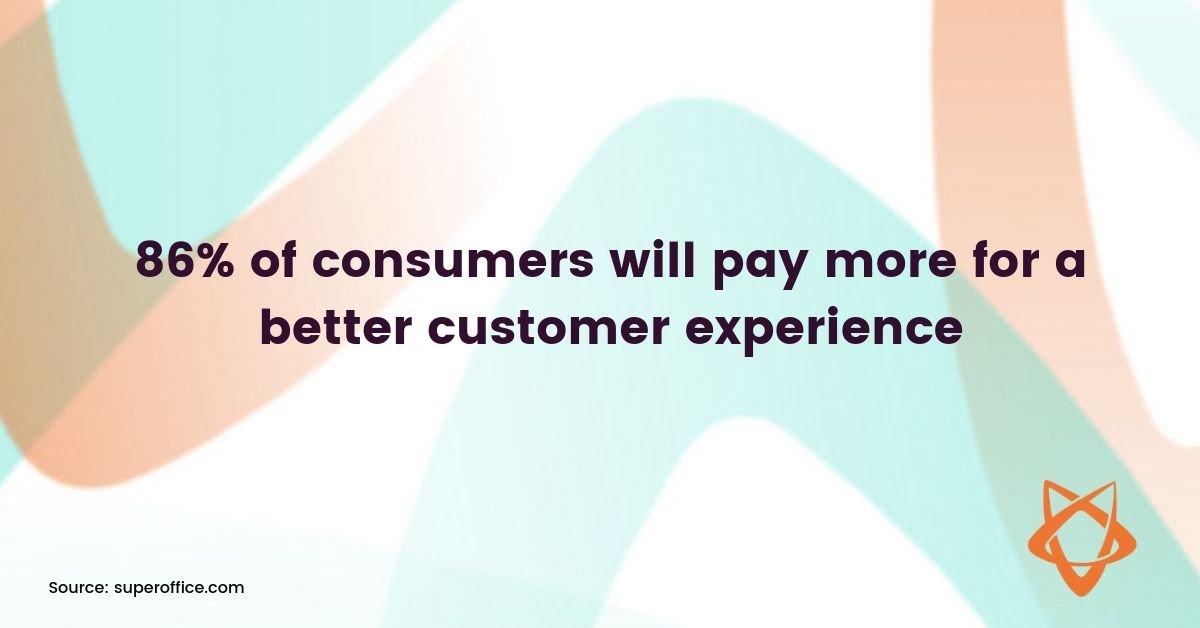Keeping a steady stream of members coming into your studio every month is one of the main challenges that gym owners face. While the ultimate goal for any fitness business is member retention; you need a solid strategy for getting those new members signed up in the first place. The fact is that one way or another; if you are a fitness business owner, you are a salesperson. You sell a service to prospective customers, and you sell how great your studio is to staff so that they are motivated to work hard. You consistently sell a set of core values and beliefs about your brand to anyone and everyone who discovers your business. When you become a business owner, your “salesperson mode” is switched on all of the time. So, how do you attract new gym members?
At the moment, the boutique fitness industry is booming, so it’s the perfect time to assess your sales strategy to increase your gym membership sales. To do this, it’s essential to understand how consumer expectations have shifted in 2019 and what they want from brands, products, and services.
What Do Customers Value in 2019?
When it comes to customer service in 2019, expectations are high. Today’s consumers are seeking a helpful and authentic service from the brands that they are choosing to put their time and money into.
A Service That Gets Results
Customers would prefer to invest more in a service that focuses on their needs and continuously provides value beyond the initial purchase. For a club or studio, this essentially means getting them the results they desire. These are the expectations a new member will have of you when they join, and it’s up to you to make sure you are always meeting those expectations.
A Personalized Member Experience

47% of today’s consumers say that personalized service and appreciation for them as a customer (45%) are vital in providing a premium experience. From the moment a new prospect shows an interest in joining your studio, you need to be delivering a great experience. If they are looking around at a few different club options, making your approach authentic and personal is what could set you apart from competitors. 86% of consumers will pay more for better customer experience.
How Do You Pitch a Gym Membership?
From what we know of current consumer values, your pitch needs to focus on authenticity. Rather than hard selling and discussing numbers, let what you and your studio or club offers do the selling for you.
With an understanding of what today’s consumers want, it’s time to apply it to every growth aspect of your fitness business, starting with new membership sales. In this article, we’ll cover the five key areas to focus your efforts on.
1. Know Your Niche
Whether you’re a fitness center, health club, or gym; don’t make the mistake of positioning your brand vaguely. Identifying your unique selling points will define the type of members you should focus your efforts on. It’s all about defining your brand, values, and goals and targeting the “right” audience with it. Whatever the size of your studio, or whatever you’re offering; think critically about who your target customers are and lock this down before anything else. A recent study revealed that 50% of sales time gets wasted on unproductive prospecting. That’s half of your valuable sales time gone up in smoke if you don’t define who you are.
Attracting Your Target Customer
Speaking about marketing resources, CEO and co-founder of One Life Social, Jake Anderson has some great advice on using digital marketing efforts to attract the right members to your gym.
“What people do is they don’t know who’s interested and they will spend a lot of money to start this ad campaign. They will waste a lot of money because they don’t actually know the right kind of people that are clicking and engaging. Whereas if you spend less and start slow and understand who is engaging, and start to know the audience, they start to understand the product and trust it and like it. Then when you actually know who is interested, you can dabble down and spend your money in the right places and get better results.”
Jake is specifically using social media and online marketing as an example, but the concept easily relates to any kind of lead generation. Know your USP and know your audience, and you’ll be more successful at getting quality leads through the door.
2. Listen to Your Prospects
Attracting the right customer for your fitness business is phase one. Once they’re at your front desk inquiring about signing up, you need to begin by asking questions before you start selling. Nine out of 10 consumers value when a business knows their account history and current activities, so getting into the habit of knowing your customers from the get-go is good practice!
Only 13% of customers think a salesperson can understand their needs; so this stage of your selling strategy should be a conversation, not a one-sided pitch. Let’s touch back on 2 of the key points that customers value in 2019: Connecting with your prospective members from the very first time you speak with them adds personalization. This will make the customer feel appreciated.
Get to Know Your Prospect
A “salesy” pitch can be overwhelming and tends to make prospects feel defensive. These prospects have already come to you, so there’s no need to throw on the hard sell. Asking questions is more likely to draw them in and encourage them to become a member. It’s a soft approach that can help push the decision-making process in your favor. By asking some key questions and showing an interest, you will get a better idea of their fitness goals. You can then tailor the rest of your pitch to appeal to them. For example; say you’re a studio offering a variety of classes and you have some free trial offers for prospective members. If you take the time to get to know the customer, you can offer them the class that will best suit their goals. Again this is adding personalization to your service. In the long run, the prospect is more likely to become a member after trialing a relevant class.
When you’re asking the right questions, make sure you pay attention to the response, especially noting any subtle giveaways. Long-standing fitness fanatics will probably take to a new studio like a duck to water, but many people don’t actually know what to do in the gym. Identifying someone’s fitness level and experience is vital when selecting which parts of your studio will most appeal to them. If the prospect appears to lack confidence; it’s up to you to reassure them that there is nothing intimidating about your studio. Let them know guidance is available and they’ll be making a great choice if they sign up.
3. Offer Value
As we know, it’s important to today’s consumers that a service provides constant value. This should be apparent in the way you interact with prospective members (listen, don’t sell!). It also applies to what you can physically offer them because it demonstrates that you appreciate that they’re considering your studio and that they’re important.
The Top 10 Barriers
Slowing Your Fitness
Business Growth
Discover more Free Trials
A trial at one of your classes, use of your equipment or personal training session can go a long way in demonstrating how your studio meets customers needs. However, the same applies here as in section 1 on knowing your niche. Offering a general trial of your facilities is less likely to appeal to an individual because all of your prospects will have different goals. It’s also worth considering the “free” part of the trial, as it’s now more common for people to abuse this benefit. That’s not to say that there are no benefits to offering a free trial. But there are smarter ways that you can offer value to potential new members.
Incentives
If a potential member is genuinely considering signing up to your gym or studio; an incentivized offer will attract them. If they’re only interested in getting something for free, giving them a free session will not make them join your studio. Choose offers that still bring the customer value, but also require some kind of commitment on their part. The examples below are just a couple of ideas to help you think a little differently about what you can offer.
Say you’re a class-based studio that charges €15 a class. Rather than giving prospective members a trial class for free:
- Offer the first two classes for €15 instead. This way, they’re still getting a free class so will feel like they’re getting value, but you’re also getting them to commit to something. This means less chance of abusing the offer, and less chance of you giving away a spot in your class that they might not turn up for.
- Offer the first class for its usual price of €15. Once they have taken the class, give them the opportunity to book their next one for half price if they book within 48hrs.
Both of these are fair options that offer value to the customer. Give them a go or come up with some alternative incentives. Test your ideas out to see which one gives a better result. Perfecting your incentive is often a case of trial and error. If customers ask why you don’t offer a straight-up free trial, be honest. Explain that this is more beneficial to them because it will encourage them to commit to the experience, and help decide whether or not it’s right for them. It will show that you’re making an effort from the get-go to help them get the most out of your service.
Referrals
We’ve talked before about the benefits of a loyalty system. When it comes to getting prospective new members through the door, a referral program is a great way to get the ball rolling. 92% of people trust referrals from people they know, and people who are referred by other customers have a 37% higher retention rate. There’s no harm in starting out small if you’re not yet convinced that you want to run a referral program. Start with the basics; send out an email offer to a selection of existing members. Add a personalized touch to the email by choosing people that have completed a class that day:
Great work in today’s class! Save 10% on your next one…
Got a friend who’d love this class? Bring them along next time, and you’ll both save 10%.
4. Follow Up
If a prospect hasn’t become a member after your initial conversation or trial, it’s time to follow up. Obviously, you don’t want to pester them, but you don’t want them to forget or lose interest either. 80% of sales prospects need five follow-up calls after the first meeting. 44% of sales rep give up after just 1. Checking in to assess where they are in their decision-making process will either help to close the deal, or provide you with valuable feedback.
Perhaps they didn’t enjoy the trial. This is an opportunity for you to ask how you could improve or what you could have done differently. You’ll encounter a range of prospects, and it’s great when they’re “yes people” who sign up straight away. But not every potential member will be this way, and that doesn’t mean you give up! When it comes to increasing your membership sales, remember two key things: Every prospect is unique, and selling doesn’t stop after the first pitch.
5. Implement Your Sales Strategy Across the Business
Once you understand that patience is key to building a relationship with your prospects; you need to make sure that your sales team are following the same approach. There’s no point if your good work is being undone with hard-selling when you’re not around:
Prospective member: “I want to tone up.”
Salesperson: “That’s great! We’ve got this machine and this program and this trainer and this nutrition plan!!!”
Your staff are trained in fitness and have heard it all before, so will naturally jump in with the pitch that they’re familiar with. They don’t take the time to see the prospect as an individual. A good training method for this situation is role-playing; try acting out a new member scenario, taking the time to switch roles so that staff can understand both ends:
Prospective member: “I want to tone up.”
Questions sales staff should consider:
- Why do they want to tone up?
- What areas do they want to target?
- If they tone up, how would it change their life or help them?
- Why have they chosen to tone up now?
- Have they tried to reach this goal before?
- What is their fitness experience?
- What will be the hardest part of this challenge for them? Time? Commitment? Diet?
In Summary
From start to finish; when you’re acquiring new members, make sure everything is as straightforward for them as possible. Keeping things simple for your prospects will make the process simple for you too; so you can focus on assessing and improving your strategy. Increasing your gym membership sales comes down to key three steps:
- Know your niche and know your audience.
Selling is an integral part of a successful fitness business. Know what makes you unique and find prospects that your business will work for. - Listen and offer value.
Let prospects see that becoming a member of your studio is going to help them reach their goals because you understand them. Selling isn’t a one-sided pitch, and everyone is different. - Follow up.
Don’t pester prospects, but don’t miss out. Keep a consistent flow of communication going. If your prospect doesn’t sign up, there is still always a valuable lesson you can take away.
Table of contents














